Martin Fowler's Blog, page 35
February 8, 2015
photostream 82
February 7, 2015
Bliki: DataLake
Data Lake is a term that's appeared in this decade to describe
an important component of the data analytics pipeline in the world of
Big Data. The idea is to
have a single store for all of the raw data that anyone in an
organization might need to analyze. Commonly people use
Hadoop to work on the data in the lake, but the concept is broader
than just Hadoop.
When I hear about a single point to pull together all the data
an organization wants to analyze, I immediately think of the notion
of the data warehouse (and data
mart [1]). But there is a vital distinction between the
data lake and the data warehouse. The data lake stores raw
data, in whatever form the data source provides. There is no
assumptions about the schema of the data, each data source can use
whatever schema it likes. It's up to
the consumers of that data to make sense of that data for their own
purposes.
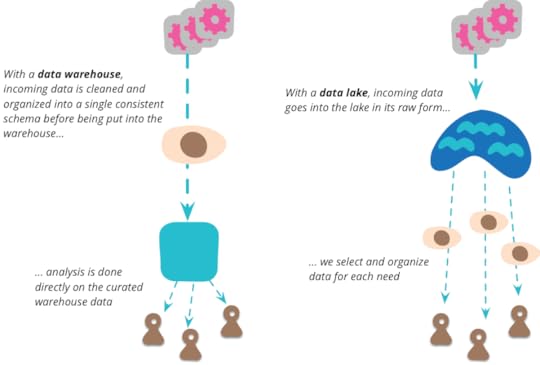
This is an important step, many data warehouse initiatives didn't
get very far because of schema problems. Data warehouses tend to
go with the notion of a single schema for all analytics needs, but
I've taken the view that a single unified data model is impractical
for anything but the smallest organizations. To model even a
slightly complex domain you need multiple
BoundedContexts, each with its own data model. In
analytics terms, you need each analytics user to use a model that
makes sense for the analysis they are doing. By shifting to storing
raw data only, this firmly puts the responsibility on the data
analyst.
Another source of problems for data warehouse initiatives is
ensuring data quality. Trying to get an authoritative single source
for data requires lots of analysis of how the data is acquired and
used by different systems. System A may be good for some data, and
system B for another. You run into rules where system A is better
for more recent orders but system B is better for orders of a month
or more ago, unless returns are involved. On top of this, data
quality is often a subjective issue, different analysis has
different tolerances for data quality issues, or even a different
notion of what is good quality.
This leads to a common criticism of the data lake - that it's just a
dumping ground for data of widely varying quality, better named a
data swamp. The criticism is both valid and irrelevant. The hot
title of the New Analytics is "Data Scientist". Although it's a
much-abused title, many of these folks do have a solid background in
science. And any serious scientist knows all about data quality
problems. Consider what you might think is the simple matter of analyzing temperature readings
over time. You have to take into account that some weather stations
are relocated in ways that may subtly affect the readings, anomalies due to problems
in equipment, missing periods when the sensors aren't working. Many
of the sophisticated statistical techniques out there are created
to sort out data quality problems. Scientists are always skeptical about
data quality and are used to dealing with questionable data. So for
them the lake is important because they get to work with raw data
and can be deliberate about applying techniques to make sense of it,
rather than some opaque data cleansing mechanism that probably does
more harm that good.
Data warehouses usually would not just cleanse but also aggregate
the data into a form that made it easier to analyze. But scientists
tend to object to this too, because aggregation implies throwing
away data. The data lake should contain all the data because you
don't know what people will find valuable, either today or in a
couple of years time.
One of my colleagues illustrated this thinking with a recent
example: "We were trying to
compare our automated predictive models versus manual forecasts made
by the company's contract managers. To do this we decided to train
our models on data only up to about a year ago and compare the
predictions to the ones made by managers at that same time. We now
know the correct results so this should be good test of accuracy.
When we started to do this it appeared that the manager's predictions
were horrible and that even our simple models, made in just two weeks,
were crushing them. We suspected that this was too good (for us) to be
true. After a lot of testing and digging we discovered that the time
stamps associated with those manager predictions were not correct.
They were being modified by some end-of-month processing report. So in
short, these values in the data warehouse were useless and so we
feared that we would have no way of performing this comparison. After
more digging we found that these reports were stored somewhere where we
could get them and extract the real forecasts made at that time.
(We're crushing them again but it's taken many months to get there)."
The complexity of this raw data means that there is room for
something that curates the data into a more manageable structure (as
well as reducing the considerable volume of data.) The data lake shouldn't be
accessed directly very much. Because the data is raw, you need a lot
of skill to make any sense of it. You have relatively few people who
work in the data lake, as they uncover generally useful views of
data in the lake, they can create a number of data marts each of which
has a specific model for a single bounded context. A larger number
of downstream users can then treat these lakeshore marts as an
authoritative source for that context.
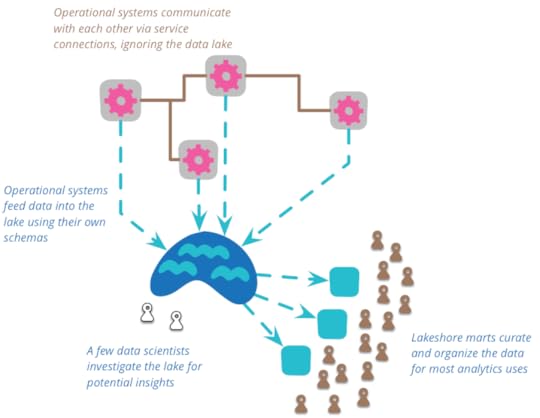
So far I've described the data lake as singular point for
integrating data across an enterprise, but I should mention that
isn't how it was originally intended. The term was
coined by James Dixon in 2010, when he did that he intended a
data lake to be used for a single data source, multiple data sources
would instead form a "water garden". Despite its original formulation
the prevalent usage now is to treat a data lake as combining many
sources. [2]
You should use a data lake for analytic purposes, not for
collaboration between operational systems. When operational systems
collaborate they should do this through services designed for the
purpose, such as RESTful HTTP calls, or asynchronous messaging. The
lake is too complex to trawl for operational communication. It may
be that analysis of the lake can lead to new operational
communication routes, but these should be built directly rather than
through the lake.
It is important that all data put in the lake should have a clear
provenance in place and time. Every data item should have a clear
trace to what system it came from and when the data was produced.
The data lake thus contains a historical record. This might come
from feeding Domain Events
into the lake, a natural fit with Event Sourced systems. But it could
also come from systems doing a regular dump of current state into the
lake - an approach that's valuable when the source system doesn't
have any temporal capabilities but you want a temporal
analysis of its data. A consequence of this is that data put into
the lake is immutable, an observation once stated cannot be removed
(although it may be refuted later), you should also expect
ContradictoryObservations.
The data lake is schemaless, it's up to the source systems to
decide what schema to use and for consumers to work out how to deal
with the resulting chaos. Furthermore the source
systems are free to change their inflow data schemas at will, and
again the consumers have to cope. Obviously we prefer such changes
to be as minimally disruptive as possible, but scientists prefer messy
data to losing data.
Data lakes are going to be very large, and much of the storage is
oriented around the notion of a large schemaless structure - which
is why Hadoop and HDFS are usually the technologies people use for
data lakes. One of the vital tasks of the lakeshore marts is to
reduce the amount of data you need to deal with, so that big data analytics
doesn't have to deal with large amounts of data.
The Data Lake's appetite for a deluge of raw data raises awkward
questions about privacy and security. The principle of
Datensparsamkeit is very much in tension with the data
scientists' desire to capture all data now. A data lake makes a
tempting target for crackers, who might love to siphon choice bits
into the public oceans. Restricting direct lake access to a small
data science group may reduce this threat, but doesn't avoid the
question of how that group is kept accountable for the privacy of
the data they sail on.
Notes
1:
The usual distinction is that a data mart is for a single
department in an organization, while a data warehouse integrates
across all departments. Opinions differ on whether a data
warehouse should be the union of all data marts or whether a
data mart is a logical subset (view) of data in the data
warehouse.
2:
In a later blog post, Dixon emphasizes the lake versus water
garden distinction, but (in the comments) says that it is a
minor change. For me the key point is that the lake stores a
large body of data in its natural state, the number of feeder
streams isn't a big deal.
Acknowledgements
My thanks to
Anand Krishnaswamy, Danilo Sato, David Johnston, Derek Hammer, Duncan Cragg, Jonny Leroy, Ken
Collier, Shripad Agashe, and Steven Lowe
for discussing drafts of this post on our internal mailing lists
January 27, 2015
Using oauth for a simple command line script to access Google's data
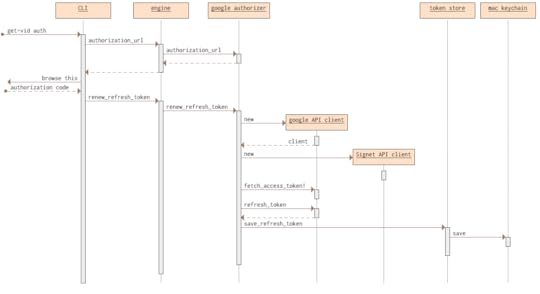
I recently needed to write a simple script to pull some data
from a Google website. Since I was grabbing some private data, I
needed authorize myself to do that. I found it much more work than
I expected, not because it's hard, but because there wasn't much
documentation there to guide me - I had to puzzle out what path
to go based on lots of not particularly relevant documentation. So
once I'd figured it out I decided to write a short account of what
I'd done, partly in case I need to do this again, and partly to
help anyone else who wants to do this.
January 24, 2015
photostream 81
January 13, 2015
Bliki: DiversityMediocrityIllusion
I've often been involved in discussions about deliberately
increasing the diversity of a group of people. The most common case
in software is increasing the proportion of women. Two examples are
in hiring and conference speaker rosters where we discuss trying to
get the proportion of women to some level that's higher than usual.
A common argument against pushing for greater diversity is that it
will lower standards, raising the spectre of a diverse but mediocre
group.
To understand why this is an illusionary concern, I like to
consider a little thought experiment. Imagine a giant bucket that
contains a hundred thousand marbles. You know that 10% of these
marbles have a special sparkle that you can see when you carefully
examine them. You also know that 80% of these marbles are blue and
20% pink, and that sparkles exist evenly across both colors [1]. If you were
asked to pick out ten sparkly marbles, you know you could
confidently go through some and pick them out. So now imagine you're
told to pick out ten marbles such that five were blue and five were
pink.
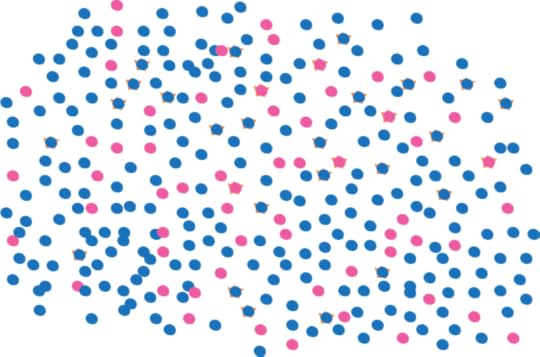
I don't think you would react by saying “that's impossible”.
After all there are two thousand pink sparkly marbles in there,
getting five of them is not beyond the wit of even a man. Similarly
in software, there may be less women in the software business, but
there are still enough good women to fit the roles a company or a
conference needs.
The point of the marbles analogy, however, is to focus on the
real consequence of the demand for 50:50 split. Yes it's possible to
find the appropriate marbles, but the downside is that it takes
longer. [2]
That notion applies to finding the right people too. Getting
a better than base proportion of women isn't impossible, but it does
require more work, often much more work. This extra effort
reinforces the rarity, if people have difficulty finding good
people as it is, it needs determined effort to spend the extra time
to get a higher proportion of the minority group — even if you are
only trying to raise the proportion of women up to 30%, rather than
a full 50%.
In recent years we've made increasing our diversity a high
priority at ThoughtWorks. This has led to a lot of effort trying to
go to where we are more likely to run into the talented women we are
seeking: women's colleges, women-in-IT groups and conferences. We
encourage our women to speak at conferences, which helps let other
women know we value a diverse workforce.
When interviewing, we make a point of ensuring there are women
involved. This gives women candidates someone to relate to, and
someone to ask questions which are often difficult to ask men. It's
also vital to have women interview men, since we've found that women
often spot problematic behaviors that men miss as we just don't have
the experiences of subtle discriminations. Getting a diverse group
of people inside the company isn't just a matter of recruiting, it
also means paying a lot of attention to the environment we have, to try to
ensure we don't have the same AlienatingAtmosphere that
much of the industry exhibits. [3]
One argument I've heard against this approach is that if everyone
did this, then we would run out of pink, sparkly marbles. We'll know
this is something to be worried about when women are paid
significantly more than men for the same work.
One anecdote that stuck in my memory was from a large,
traditional company who wanted to improve the number of women in
senior management positions. They didn't impose a quota on
appointing women to those positions, but they did impose a quota for
women on the list of candidates. (Something like: "there must be at
least three credible women candidates for each post".) This
candidate quota forced the company to actively seek out women
candidates. The interesting point was that just doing this, with no
mandate to actually appoint these women, correlated with an increased
proportion of women in those positions.
For conference planning it's a similar strategy: just putting out a call for
papers and saying you'd like a diverse speaker lineup isn't enough.
Neither are such things as blind review of proposals (and I'm not
sure that's a good idea anyway). The important thing is to seek out
women and encourage them to submit ideas. Organizing conferences is
hard enough work as it is, so I can sympathize with those that don't
want to add to the workload, but those that do can get there. FlowCon
is a good example of a conference that made this an explicit
goal and did far better than the industry average (and in case you
were wondering, there was no
difference between men's and women's evaluation scores).
So now that we recognize that getting greater diversity is a
matter of application and effort, we can ask ourselves whether the
benefit is worth the cost. In a broad professional sense, I've
argued that it is, because our DiversityImbalance is
reducing our ability to bring the talent we need into our profession,
and reducing the influence our profession needs to have on society.
In addition I believe there is a moral argument to push back against
long-standing wrongs faced by
HistoricallyDiscriminatedAgainst groups.
Conferences have an important role to play in correcting this
imbalance. The roster of speakers is, at least subconsciously, a
statement of what the profession should look like. If it's all white
guys like me, then that adds to the AlienatingAtmosphere
that pushes women out of the profession. Therefore I believe that
conferences need to strive to get an increased proportion of
historically-discriminated-against speakers. We, as a profession,
need to push them to do this. It also means that women have an
extra burden to become visible and act as part of that better
direction for us. [4]
For companies, the choice is more personal. For me,
ThoughtWorks's efforts to improve its diversity are a major factor
in why I've been an employee here for over a decade. I don't think
it's a coincidence that ThoughtWorks is also a company that has a
greater open-mindedness, and a lack of political maneuvering, than most of the
companies I've consulted with over the years. I consider those
attributes to be a considerable competitive advantage in attracting
talented people, and providing an environment where we can
collaborate effectively to do our work.
But I'm not holding ThoughtWorks up as an example of perfection.
We've made a lot of progress over the decade I've been here, but we
still have a long way to go. In particular we are very short of
senior technical women. We've introduced a number of programs around
networks, and leadership development, to help grow women
to fill those gaps. But these things take time - all you have to do
is look at our Technical Advisory Board
to see that we are a long way from the ratio we seek.
Despite my knowledge of how far we still have to climb, I can
glimpse the summit ahead. At a recent AwayDay in Atlanta I was
delighted to see how many younger technical women we've managed to
bring into the company. While struggling to keep my head above water
as the sole male during a late night game of Dominion, I enjoyed a
great feeling of hope for our future.
Notes
1:
That is 10% of blue marbles are sparkly as are 10% of pink.
2:
Actually, if I dig around for a while in that bucket, I find
that some marbles are neither blue nor pink, but some
engaging mixture of the two.
3:
This is especially tricky for a company like us, where so much
of our work is done in client environments, where we aren't able
to exert as much of an influence as we'd like. Some of our
offices have put together special training to educate both sexes
on how to deal with sexist situations with clients. As a man, I
feel it's important for me to know how I can be supportive, it's
not something I do well, but it is something I want to learn to improve.
4:
Many people find the pressure of public speaking intimidating
(I've come to hate it, even with all my practice). Feeling that
you're representing your entire gender or race only makes it
worse.
Acknowledgements
Camila Tartari, Carol Cintra, Dani Schufeldt, Derek Hammer, Isabella
Degen, Korny Sietsma, Lindy Stephens, Mridula Jayaraman, Nikki
Appleby, Rebecca Parsons, Sarah Taraporewalla, Stefanie Tinder, and Suzi
Edwards-Alexander
commented on
drafts of this article.
January 9, 2015
An example of preparatory refactoring
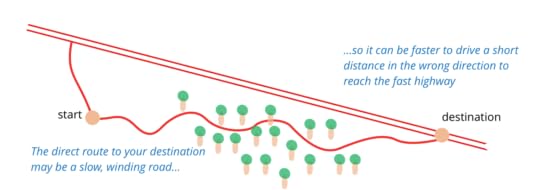
There are various ways in which refactoring can fit into our
programming workflow. One useful notion is that of Preparatory
Refactoring. This is where I'm adding a new feature, and I see
that the existing code is not structured in such a way that
makes adding the feature easy. So first I refactor the code into
the structure that makes it easy to add the feature, or as Kent
Beck pithily put it "make the change easy, then make the easy
change".
It always helps to use examples to explain things, and
so I took the opportunity when I ran into a case while adding a
new feature to my publication toolchain.
Interview on internet privacy with Erik Dörnenburg, Ola Bini, and Tim Bray

At goto Aarhus this year, there was a theme on internet
privacy. Tim Bray gave a keynote on the state of
browsers which touched on this issue and later gave a full
conference talk on the state of internet
privacy and security. Erik Dörnenburg and I gave a keynote
explaining why we feel it is the responsibility of
developers to defeat mass surveillance. Our colleague Ola
Bini, who is very active in the internet security world himself,
felt this was a good opportunity to get all of us together to discuss
these issues in an interview.
December 20, 2014
photostream 80
December 19, 2014
Agile Architecture
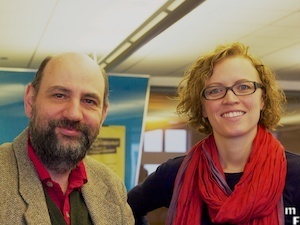
A couple of weeks ago I did a joint talk with my colleague Molly Bartlett Dishman about the interaction of agile software development and application architecture. We talk how these two activities overlap, explaining that architecture is a vital part of a successful agile project. We then move on to passing on tips for how to ensure that the architecture work is happening.
This talk was part of ThoughtWorks’s “Rethink” event in Dallas. There are also excellent talks by Brandon Byars on how enterprises should be restructured to take advantage of agile thinking and by “Pragmatic” Dave Thomas on the dangers of “agile” being co-opted by the big-methodology crowd that it was designed to oppose. (The latter is worth it just to enjoy Dave in a suit and tie.)
Molly and I will be reprising and updating our talk for the O’Reilly Architecture conference in March next year.
December 17, 2014
APIs should not be copyrightable
Last month, the Electronic Frontier Foundation (EFF)
filed
an amicus brief with the Supreme Court of the United States, asking the
justices to review an earlier lower court decision that allows
APIs (Application Programming Interfaces) to be copyrightable. I'm
one of the 77 software professionals who signed the brief,
although rather intimidated by a group that includes Abelson &
Sussman, Aho & Ullman, Josh Bloch, Fred Brooks, Vint Cerf,
Peter Deutsch, Mitch Kapor, Alan Kay, Brian Kernighan, Barbara
Liskov, Guido van Rossum, Bruce Schneier, and Ken Thompson.
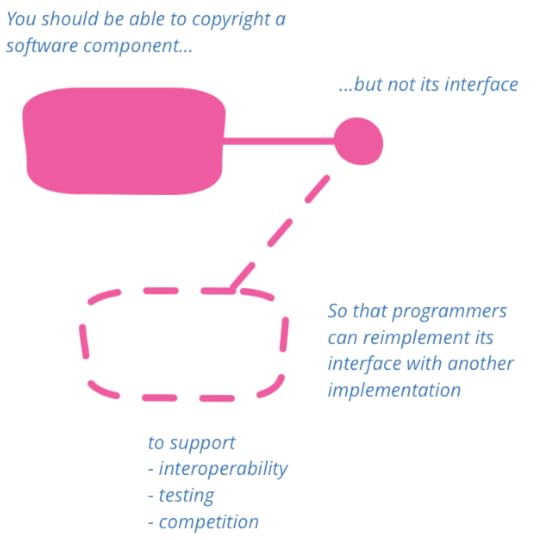
The original lawsuit was brought by Oracle against Google,
claiming that Oracle held a copyright on the Java APIs, and that
Google infringed these APIs when they built Android. My support in
this brief has nothing to do with the details of the dispute
between these two tech giants, but everything to do with the
question of how intellectual property law should apply to
software, particularly software interfaces.
I'm not part of the thinking that asserts that nothing in
software should be intellectual property. While I do think that
software patents are inherently
broken, copyright is a good mechanism to allow software
authors to have some degree of control over of what happens with their hard work.
Software has always been a tricky source of income, because
it's trivial to copy. Copyright provides a legal basis to control at least
some copying. Without something like this, it
becomes very hard for someone to work on creating things and still
be able to pay the mortgage. While we all like free stuff, I think
it's only fair to give people the chance to earn a living from the
work they do.
But any intellectual property mechanism has to balance this
benefit with the danger that excessive intellectual property
restrictions can impede further innovation, whether that be
extending an invention, or reimagining a creative work. As a
result, patent and copyright regimes have some form of limitation
built in. One limitation is one of time: patents and copyrights
expire (although the Mickey Mouse
discontinuity is threatening that).
Interfaces are how things plug together. An example from the
physical world is cameras with interchangeable lenses. Many camera
makers don't encourage other companies to make lenses for their
cameras, but such third-party companies can reverse-engineer how
the interface works and build a lens that will mount on a camera.
We regularly see this happen with third-party parts providers -
and these third parties do a great deal to provide lower costs and
features that the main company doesn't support. I used a Sigma
lens with my Canon camera because Canon didn't (at the time)
make an 18-200mm lens. I've bought third party batteries for
cameras because they're cheaper. Similarly I've repaired my car with third party
parts again to lower costs or get an audio system that better
matched my needs.
Software interfaces are much the same, and the ability to
extend open interfaces, or reverse-engineer interfaces, has played
a big role in advancing software systems. Open interfaces were a
vital part of allowing the growth of the internet, nobody has to
pay a copyright licence to build a HTTP server, nor to connect to
one. The growth of Unix-style operating systems relied greatly on
the fact that although much of the source code for AT&T's Unix
was copyrighted, the interfaces were not. This allowed offshoots
such as BSD and Linux to follow Unix's interfaces, which helped
these open-source systems to get traction by making it easier for
programs built on top of Unix to interact with new
implementations.
A picture is worth a 1000 words, so here's a picture of some books written by signatories of the EFF amicus brief -- Josh Bloch
The story of SMB and Samba is a good example of how
non-copyrightable APIs spurred competition. When Windows became a
dominent desktop operating system, its SMB protocol dominated
simple networks. If non-windows computers wanted to communicate
effectively with the dominant windows platform, they needed to
talk to SMB. Microsoft didn't provide any documentation to help
competitors do this, since an inability to communicate with SMB
was a barrier to their competitors. However, Andrew Tridgell was
able to deduce the specification for SMB and build an
implementation for Unix, called Samba. By using Samba non-windows
computers could collaborate on a network, thus encouraging the
competition from Mac and Linux based systems. A similar story
happened years before with the IBM BIOS, which was
reverse-engineered by competitors.
The power of a free-market system comes from competition, the
notion that if I can find a way to bake bread that's either
cheaper or tastier than my local bakers, I can start a bakery and
compete with them. Over time my small bakery can grow and compete
with the largest bakers. For this to work, it's vital that we
construct the market so that existing players that dominate the
market cannot build barriers to prevent new people coming in with
innovations to reduce cost or improve quality.
Software interfaces are critical points for this with software.
By keeping interfaces open, we encourage a competitive
marketplace of software systems that encourage innovation to
provide more features and reduce costs. Closing this off will
lead to incompatible islands of computer systems, unable to
communicate.
Such islands of incompatibility present a considerable barrier
to new competitors, and are bad for that reason alone. But it's
they are bad for users too. Users value software
that can work together, and even if the various vendors of
software aren't interested in communication, we should encourage
other providers to step in and fill the gaps. Tying systems
together requires open interfaces, so that integrators can safely
implement an interface in order to create communication links. We
value standard connectors in the physical world, and while
software connections are often too varied for everything to be
standardized, we shouldn't use copyright law to add further hurdles.
The need to implement interfaces also goes much deeper than
this. As programmers we often have to implement interfaces defined
outside our code base in order to do our jobs. It's common to have
to modify software that was written with one library in mind to
work with another - a useful way to do this is to write adapters that implement the interface of the
that implement the interface of the
first library by forwarding the second. Implementing interfaces is
also vital in testing, as it allows you to create Test Doubles.
So for the sake of our ability to write programs properly, our
users' desire to have software work together, and for society's
desire for free markets that spur competition — copyright should
not be used for APIs.
Acknowledgements
Derek Hammer raised the point that implementing interfaces
for adapters and testing is a regular part of programming.
Andy Slocum, Jason Pfetcher, Jonathan Reyes, Josh Bloch, and
Michael Barclay
commented on drafts of this article. Extra thanks to Josh Bloch for
helping to organize the 77 of us who signed the brief.
Martin Fowler's Blog
- Martin Fowler's profile
- 1104 followers









